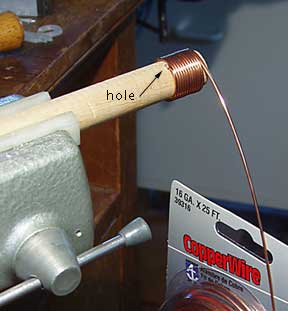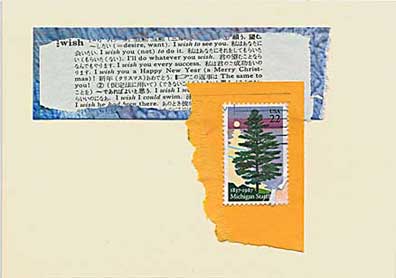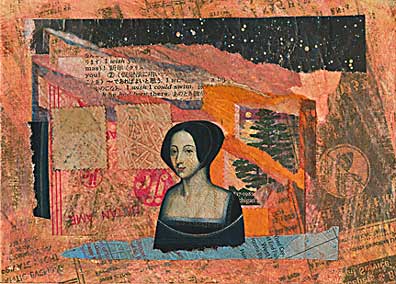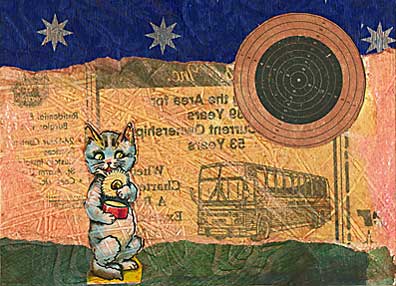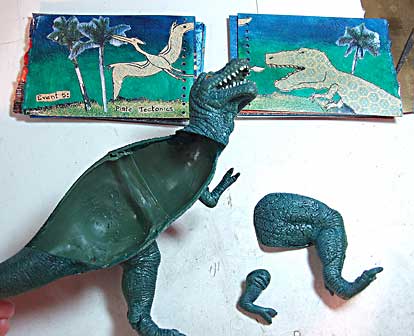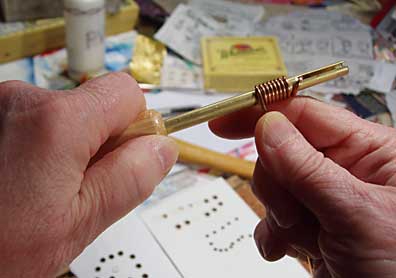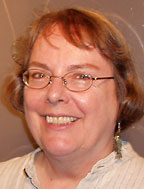Landscape for 7 Extinction Events
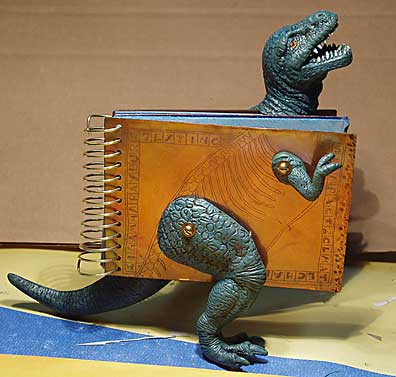
The book for “7 Extinction Events” is almost together. I used brass wire for the spiral binding. There is a problem with the front leg. If I don’t tighten it much, it tends to pivot forward, making the fierce tyrannosaurus look like a sitting rabbit. When I tighten the nut more, the foot splays forward, making him look knock-kneed. Not good. So I’m taking some plastic off the inside of the leg to make a closer fit against the cover.
I also started on the scenery. There was a creek behind our house that I loved when I was a kid. It was a wonderful place, full of mud puppies, polliwogs and other fascinating stuff. On the other side of the creek was a barbed wire fence, and lots of cows in a field. My brother and sisters and I pretended we were pirates and western settlers, and I don't remember what else down there. There was a spot where I could lie on the grass and daydream, completely alone and happy. I’ll leave the cows out, of course, but I want that kind of creek for my dinosaur book.
There should be footprints and some ferns and palm trees. I found some great palm trees on the internet. There are good instructions for painting them here. Because I’ve never done this kind of thing before, I’m making some tests. I painted a trunk and a cluster of palm leaves with some Golden acrylic paints.
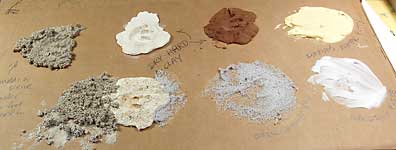
I also made a lot of samples for the ground that he’s walking on. I want the footprints to be fairly clear, they’re a reference to fossil foot prints. So I have 5 different materials that I’m testing for that.
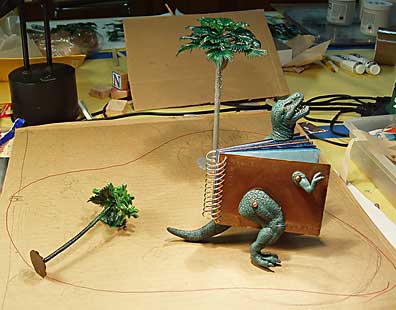
Here's a maquette of the whole set up to see how the parts look together. The red line is approximately the shape I’ll make for the base. When I like the shape and the relationship of the parts I’ll cut it out of plywood.
Looking at other people’s tests and maquettes is pretty boring, but I wanted examples to make my point. I think it’s very useful to make them when you’re doing something new. It’s a habit I learned when I was making jewelry. You don’t want to spend 20 hours on something just to mess it up in the last step.
Labels: Work in Progress

